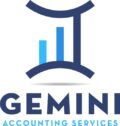You\’ve got an S corporation or maybe an LLC taxed as an S corp, right? Well, you need to get familiar with Form 1120S. It\’s the tax form that you\’ll use to file your federal income taxes, and it\’s different from Form 1120, which is for C corporations. Making sure you complete this form correctly is crucial for meeting your tax obligations.
Understanding S Corporations\’ Tax Obligations
What is a S corporation?
An S corporation is a form of organization that chooses to transfer corporate income, losses, deductions, and credits on to its shareholders for federal tax purposes. Shareholders of S corporations disclose the flow-through of revenue and losses on their individual tax returns.
Tax benefits and responsibilities
S corporations have specific tax advantages, such as avoiding double taxes on corporate income. They must, nevertheless, comply with specified tax duties, such as completing Form 1120S once a year.
Preparing to Fill Out Form 1120S
Before beginning to fill out the form, acquire all relevant papers, such as the corporation\’s revenue statement, balance sheet, and expense receipts. Understanding the filing deadline, which is usually March 15th, is also necessary to avoid penalties.
******************************************************************************************************************************
The Short-Cut Guide for Filing S-Corporation Taxes
- Reporting Your Income: Make sure to accurately report all your corporation\’s gross receipts or sales. Remember, this includes all forms of income, such as your primary business revenue, interest, dividends, or any miscellaneous income streams.
- Documenting Your Deductions: Carefully list all the deductions you\’re allowed to claim. This includes expenses like salaries, rent, taxes, and interest. It’s crucial to have proper documentation for each deduction to justify its legitimacy.
- Calculating Your Tax Liability and Payments: Determine your corporation\’s tax liability carefully. Keep track of all the tax payments you\’ve made during the year, including any estimated tax payments and applicable tax credits. Ensuring accuracy in this step is vital to avoid either underpayment or overpayment of your taxes.
******************************************************************************************************************************
Step-by-Step Guide to Completing Form 1120S
- Income Section
- Gross Receipts or Sales: Report the total income your S corporation received during the tax year. This includes all sales of products or services. For example, if your S corp sold $500,000 worth of goods and services, this is the figure to report.
- Returns and Allowances: Deduct any returns or allowances from your gross receipts. If you had $10,000 in product returns, your net sales would be $490,000.
- Cost of Goods Sold: If your business sells products, calculate the cost of goods sold (COGS). This includes the cost of materials and labor directly tied to product creation.
- Deductions Section
- Salaries and Wages: Report all compensation paid to employees. Exclude shareholder-employee compensation, as it is reported elsewhere.
- Rent: Include rent expenses for property used for business purposes.
- Taxes and Licenses: Deduct taxes and licensing fees paid by the corporation.
- Interest: If your S corp has loans, the interest paid can be deductible.
- Depreciation: Depreciation of assets, like equipment and vehicles, can be claimed based on IRS guidelines.
- Employee Benefit Programs: Costs of employee benefit programs, like health insurance and retirement plans, are deductible.
- Other Deductions: Include other business expenses like travel, advertising, and repairs. Make sure they are ordinary and necessary business expenses.
- Tax and Payments Section
- Calculate Tax Liability: Determine the tax liability, if any, for your S corporation. S corps generally do not pay income tax at the corporate level, but certain taxes like built-in gains tax or excess net passive income tax may apply.
- Payments and Credits: Deduct any tax payments made during the year and apply any tax credits your business is eligible for.
- Schedule K-1 for Shareholders
- Allocating Income, Deductions, Credits: Schedule K-1 is used to report each shareholder\’s share of income, deductions, and credits. This must align with the corporate return and be reported on individual shareholders\’ tax returns.
- Accuracy is Key: Make sure the information matches shareholder records, as discrepancies can trigger IRS inquiries.
Examples
Income Example: ABC Corp., a S corporation, reported total sales of $1 million. However, they had $50,000 in returns and allowances and a $300,000 cost of goods sold. Their stated net income would be $650,000 ($1 million minus $50,000 and $300,000).
Deductions Example: XYZ LLC, which is taxed as a S company, paid $200,000 in salary, $50,000 in rent, $20,000 in taxes and $10,000 in interest. They also claimed $30,000 in depreciation and $40, 000 in other deductions. Their total deduction would be $350,000.
Common Mistakes You Should Avoid When Filing for an S-Corp
- Overstating Your Deductions: Make sure that every deduction you claim is for legitimate business expenses. You need to have proper documentation for each. Overstating or including non-allowable expenses can lead to issues with the IRS.
- Misreporting Your Shareholder Compensation: It\’s essential to accurately report your salary and that of any other shareholders, in line with IRS guidelines. Your salaries should be reasonable and not disguised distributions of profits.
- Inaccuracies in Your Schedule K-1 Forms: Any discrepancies in these forms, which show your share of income, deductions, and credits, can attract IRS scrutiny. Make sure they are correct and match your corporate tax return.
- Not Reporting All Your Income: Remember to report all income streams, including non-cash transactions and miscellaneous income. Omitting any income can lead to serious issues with the IRS.
- Not Keeping Accurate Records: Always keep precise and detailed financial records, including all receipts, invoices, and financial statements. Poor record-keeping can lead to errors in your tax filings and complications if audited.
- Ignoring State Tax Requirements: Be aware of your state-specific tax obligations for S-corporations and comply with them. Each state may have different rules and tax structures.
- Filing or Paying Late: Avoid filing or paying your taxes late as this can result in penalties and interest charges. Stick to all tax deadlines to evade these extra costs.
- Misclassifying Employees and Contractors: Make sure you correctly classify your workers to pay the right employment taxes. Misclassification can result in penalties and back taxes.
By watching out for these common pitfalls, you can have a much smoother tax filing process for your S-corporation and minimize the risk of running into problems with the IRS.
Common IRS Questions and Audits
Common Reasons You Might Face IRS Inquiries or Audits
- Income Reporting Discrepancies: If there’s a mismatch between the income you report on Form 1120S and other documents like your 1099s or W-2s, you might trigger an IRS inquiry.
- Excessive Deductions: If your deductions seem unusually high compared to your income or the norms in your industry, the IRS may take a closer look.
- Issues with Shareholder Compensation: If you report shareholder compensation inaccurately or if it seems unreasonable, this could lead to an audit.
- Late or Incomplete Filings: Remember, submitting your filings late or incomplete can not only invite inquiries but also result in penalties.
How to Prepare for and Respond to IRS Inquiries or Audits
- Maintain Comprehensive Records: It’s crucial for you to keep detailed records of all your financial transactions, like receipts, invoices, and bank statements. This practice will help you substantiate your filings if questioned.
- Understand Your Filing: Make sure you\’re familiar with the contents of Form 1120S. Be ready to explain any oddities or discrepancies in your filing.
- Seek Professional Help: If you find yourself facing an IRS inquiry or audit, consider getting help from a tax professional or attorney experienced in IRS dealings. Their expertise can be a significant asset in navigating these situations.
Examples
Example #1: How You Can Successfully Navigate an IRS Audit
- Scenario: Imagine you are an S-corp facing an audit due to high expense claims. You\’ve kept meticulous records of all your transactions.
- Outcome: Your thorough record-keeping pays off. The audit goes smoothly because you are able to substantiate all your deductions with the appropriate documentation.
Example #2: Resolve Shareholder Compensation Issues
- Scenario: Suppose you\’re running an S corporation and have incorrectly reported shareholder compensation, leading to an IRS query.
- Outcome: You seek advice from a tax advisor. Following their guidance, you amend your filings and set up a structured compensation plan, effectively preventing similar issues in the future.
Final Review and Submission Tips for Your Form 1120S
Checklist for Your Final Review
- Verify Your Income and Expenses: Take a moment to double-check all the figures you\’ve reported for accuracy. This step is crucial to make sure there are no discrepancies.
- Review Your Deductions: Make sure that all the deductions you\’re claiming are legitimate and properly documented. This is important to avoid any issues during the IRS review.
- Confirm Shareholder Information: It\’s essential to make sure that all details regarding shareholders are correct and align with their personal tax filings. Any mismatch can lead to complications.
- Cross-Check with Supporting Documents: Align your financial statements and schedules carefully with the information on Form 1120S. This helps in maintaining consistency across your documentation.
- Compliance with Tax Laws: Make sure that your return adheres to the current tax laws and regulations. Staying compliant is key to a smooth submission process.
What You Can Expect After Submitting Form 1120S
When you submit Form 1120S, you should expect to receive a confirmation from the IRS. Based on their review, there are a few possible outcomes:
- Approval of Your Return: The IRS may review and approve your submission without any further questions.
- Queries or Requests for More Information: If the IRS has questions or needs additional information, it\’s crucial for you to respond quickly and accurately.
- Audit Possibility: In rare cases, the IRS may decide to conduct an audit. If this happens, they will inform you, and you should be prepared with all necessary documentation.
Tips for a Smooth Process
- Electronic Filing: Consider e-filing for quicker processing and immediate confirmation of your submission. This method provides peace of mind by ensuring that the IRS has received your return.
- Keeping Records: It\’s important to keep a copy of the return you filed and all supporting documents. This is essential for future reference, especially if you are audited.
- Meeting Deadlines: Make sure to submit your return by the deadline. Late submissions can lead to penalties and interest charges, so timely filing is crucial to avoid these extra costs.
Wrapping Up
Getting Form 1120S right is non-negotiable if you want to keep things smooth sailing with the IRS for your S corp. Knowing what triggers audits and having all your documents in order will help make filing a breeze. Use this checklist as your secret weapon for a stress-free tax season!

